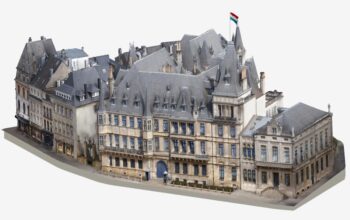In November 2022, BAE Systems introduced Future Air Support to Royal Air Force (RAF) Coningsby, the base where the UK’s Typhoon fleet is based. The Advanced Manufacturing Research Centre (AMRC) at the University of Sheffield has joined the project as a research partner to look into how digital technology, combined with more environmentally friendly, sustainable approaches, might be utilized to improve the RAF’s fleet of frontline aircraft.
The collaboration between the AMRC and BAE Systems, according to Nick Sharples, head of technological capability delivery – training, and support at BAE Systems, builds on a long-standing connection that has resulted in revolutionary collaborations. Fast jet support capabilities for current and future aircraft platforms like Tempest will change under the Future Air Support vision.
Nick stated, “We have collaborated on a variety of projects with the AMRC, from tiny demonstrators to complete facilities like Factory 2050 in Sheffield and our Factory of the Future in our BAE Systems site at Warton. “That existing trust provides us with a solid foundation. We have a great spark for working together when we combine that history with a shared goal to learn more about the fast jet support domain.
Data visualization, automation, and digital inspection are the AMRC’s first priority areas; however, technological development is at the core of this, and any number of digital technologies can be established and expedited.
We can find innovative methods to provide cutting-edge capabilities and value for our clients while minimizing environmental effects by working with our partners to test new technologies and solutions for future fast jet support.
The cutting-edge developments being developed in conjunction with BAE Systems will add to the suite of digital technologies available for the Future Air Support project, according to Ben Morgan, the research director at AMRC, who claims that digital technologies can unlock greater sustainability in the infrastructure of organizations like the Royal Air Force.
“The work we’re doing on 5G, the sustainability innovations we’re looking into at AMRC North West, and the past successes with the collaborative workstation, all feed into the Future Air Support,” he continued. It’s now a matter of integrating and using these technologies in a real-world setting since we already know they can function. Examples include mixed reality headgear, 5G networks, and automated inspection systems.
The project’s improvements will lower prices and increase the accessibility of Tempest in the future as well as Typhoon’s primary fighter jets. These technologies may be used to speed up aircraft maintenance and decrease tiredness and injury risk among support staff. Exoskeletons, autonomous co-bots, augmented reality headsets, and sustainable operations are some of the programs being tested.
In order to have an end-to-end digital default approach, from the manufacture on the factory floor to support in the operating environment, Nick added that the digital thread is being extended. Digital technology can develop novel strategies for providing cutting-edge capabilities and good value while minimizing our environmental effects.
Digital technology integration, according to Ben, “creates agility, fidelity, and efficiency.” He said: “You might have a drone look for bird attacks or battle damage while an automated guided vehicle (AGV) pulls a fighter into the hangar. A further AGV might inspect the undercarriage with a robotic arm, vision systems, and photogrammetry might be installed inside the structure, and an engineer could be led through an operation while donning an augmented reality (AR) headset.
The more you can digitize and automate the maintenance, repair, and overhaul (MRO) and inspection processes, the more agility, fidelity, and efficiency that can be created by incorporating those digital technologies. However, it’s crucial to note that the data you obtain through digitalization will boost through-life engineering, save costs, and improve sustainability. If we comprehend the data, we can reduce waste and improve the efficiency of our systems.
Along with BAE Systems, the AMRC has supported geotagging and mixed reality technologies to create potent maintenance, repair, and overhaul (MRO) digital twins. The following phase of that effort is the Future Air Support project. The collaboration builds on a long-standing relationship between the AMRC and BAE Systems that has resulted in groundbreaking projects like the robotic countersinking project, which allowed an automated production system to precisely machine holes in composite aircraft components; the creation of a collaborative robot workstation outfitted with a variety of digital technologies, which was implemented at BAE Systems’ Warton site in Lancashire; and the evolution of a collaborative robot workstation.
Credits: AMRC
Click on the following link Metrologically Speaking to read more such news about the Metrology Industry.









